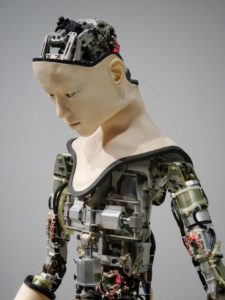Guest Blog: Daniele Ortu, Ph.D.
Neurobehavioral EEG Laboratory, Department of Behavior Analysis, University of North Texas
 Daniele Ortu is a Research Assistant Professor in the Department of Behavior Analysis at the University of North Texas, where he teaches Behavioral Neuroscience and Verbal Behavior. He received his M.A. from AILUN in Nuoro (Italy) and his Ph.D. from the University of Stirling (United Kingdom). His primary interests are real-time measures of brain activity, specifically Electroencephalography and Event-Related Potentials and how they relate to a Skinnerian perspective. Conceptually, Dr. Ortu is involved in understanding how brain responses can help provide missing pieces of the puzzle when understanding complex human behavior. Daniele is on the editorial board of the Journal for the Experimental Analysis of Behavior, Behavior and Social Issues, Behavior and Philosophy, and is a Guest Editor for Frontiers in Human Neuroscience.
Daniele Ortu is a Research Assistant Professor in the Department of Behavior Analysis at the University of North Texas, where he teaches Behavioral Neuroscience and Verbal Behavior. He received his M.A. from AILUN in Nuoro (Italy) and his Ph.D. from the University of Stirling (United Kingdom). His primary interests are real-time measures of brain activity, specifically Electroencephalography and Event-Related Potentials and how they relate to a Skinnerian perspective. Conceptually, Dr. Ortu is involved in understanding how brain responses can help provide missing pieces of the puzzle when understanding complex human behavior. Daniele is on the editorial board of the Journal for the Experimental Analysis of Behavior, Behavior and Social Issues, Behavior and Philosophy, and is a Guest Editor for Frontiers in Human Neuroscience.
This blog post is meant to be some sort of behavior analytic sci-fi. It was inspired by the works of Sigrid Glenn, Giulio Bolacchi, Dave Palmer, Giovanni Sartori, Francis Mechner, Bernard Guerin, B.F. Skinner, Arthur C. Clarke, and many others.
Verbal Communities in Democratic Systems

Our science likes to keep one eye on the laboratory and the other on our society. At the societal level, political scientists describe the “healthiest” democracies as the ones fully allowing and protecting multiple group affiliations. Within a democracy, the healthiest verbal communities are the ones with porous borders – those that allow members to freely migrate across ingroup and outgroup boundaries without repercussions. A response cost (e.g., social punishment in the form of retaliation) involved in entering or exiting a verbal community is problematic. For example, you have been part of a social group for a long time and, as a member, you have felt welcome and often received social praise. However, when you decide to leave you may receive implicit threats or intimidation.
Exclusive affiliations – if you are a member of Group A you cannot also be a member of Group B – tend to rely heavily on “inaccurate” socially transmitted intraverbal behavior about members of the outgroup, generating negative stereotypes and prejudices. Exclusive affiliations therefore produce what we call tribalism. Partitioned societies are prone to tribalism and balkanization.
A Multitude

For the ones of us who – based on opportunity or necessity – spend their lives changing, migrating, having multiple homes – in other words experiencing many verbal communities – does that not mean that our repertoire also becomes partitioned and balkanized? In many cases, it does. We are multitudes. Based on current stimulus control our behavior can change drastically. As the audience changes, our verbal behavior shifts as well. Who are we then? Is there such a thing as individual identity?
Even if we can conceptualize the repertoire as a collection of partitioned environment-behavior relations, research on priming and reaction time data suggests that our repertoire is an interconnected multitude. Divergent control is massive. Für Elise heard on the radio may evoke humming behavior, a visual response from piano lessons taken during childhood, subtle finger movements, and many others. And this is only considering behavior that is fully expressed. Each stimulus in our environment changes the probability of emission of many other responses, and each evoked response in turn creates ripple effects in our repertoire, when it becomes a stimulus. The way our repertoire somehow holds together is still mysterious – and it needs to be understood via more research and theorizing.
Expanding our Repertoire with New Technology

Brain Machine Interfaces (BMIs) allow biological organisms to use nonbiological receptors and effectors. New effectors and receptors have already been used successfully in experiments and clinical research (e.g., paralyzed humans moving robotic arms, rats with implants connected to sensors allowing them to respond to infrared beams). Something closely related will probably enter the consumer market within the next 5 years or so. A cortical implant comprising an array of numerous microelectrodes may soon wirelessly connect our brain to external devices. Neuralink and Elon Musk have been pushing on this for years, and, despite Musk typically being overly optimistic with his predictions when it comes to delivering his products, he is tenacious and typically does deliver in the end.
Let’s have a look at what might happen. The topography of our behavior is constrained by our effectors and receptors. We cannot respond directly to something we do not see, and we cannot engage without the help of extra tools in a movement not allowed by the physical parameters of our arms, legs, hands, and so on. With more receptor systems and response systems, selection by reinforcement will allow an expansion of our repertoire, comprising new environment-behavior relations. This is not going to be an entirely new phenomenon: we have used telescopes and tractors for a long time. Think of responding to stimuli incoming from a camera in your kitchen, going to your brain via an implant. You move a robotic arm placed at home on your kitchen counter. You see a robotic arm mixing egg yolks and pecorino cheese in a bowl. You also get real-time haptic feedback. All these actions are performed while you are sitting in a long in-person meeting at work. Your homemade carbonara may be ready by the time you get back home. I might sign up for that.
Connecting our Repertoires

A constant input and output of interpretable data flowing through an implanted neural portal. How can this change the way we interact socially with one another? Can it be useful to achieve meaningful social goals?
Interconnectedness of repertoires, in a world dangerously close to a regressive explosion of tribalism, might be considered a desirable outcome. Current web-based social networks like Facebook provide only the illusion of interconnectedness. They are built specifically to encourage social fractures, because of individuals receiving copious amounts of social praise for emitting intraverbal structures accepted by ingroups and rejected by outgroups. However, the new technical developments mentioned in the earlier section may allow forming a new hub comprising many repertoires.
As a person, becoming a walking center connected to receptors and effectors around the globe will not be an entirely surprising experience, after the initial novelty. But we get used rapidly to novelties. What we have never experienced in our human history is allowing other biological (and nonbiological) organisms to gain direct access to the hub where the selection of environment-behavior relations takes place: our brain. Brain to brain interfaces have important implications.
This is where our account becomes even more sci-fi, so to speak, depending on the pace at which implanted electrodes will also be able interface with subcortical areas involved in reinforcement and punishment (and their corresponding emotional responses.) A brain-to-brain interface might allow us, among other things, to share as a group, synchronously, the effects of consequential stimuli. Moreover, consequences have emotional byproducts – and the emotional responses may also be shareable by whoever is connected to the network. Physical and emotional pain experienced by any organism will have the potential to be experienced by the other members. This is a potentially terrifying prospect. That technology, in the wrong hands, may be used to control large numbers of individuals for horrible purposes.
But let’s try to also look at a potentially good use of that technology. If individuals choose to experience other people’s pain, one potential outcome is the decrease of conflicts, adversarial relations, and the increase of cooperative interactions. If the shared emotional responses can be scaled to a large number of people across many sociological groups around the globe, socio political systems based on competition may not be as effective and preferable, and resource-based systems may be favored. This may lead to an effective democratic system in which groups that have different perspectives exist and cooperate with one another with a common goal – the minimization of pain and unnecessary states of deprivation for all the individuals involved.
We are probably still far from this technology. How far, it is hard to tell. Both neuroscientific and AI technologies are progressing at furious pace, and the two combined may lead to the sci-fi scenario described above sooner than we might expect. If the question is when, then we might as well begin our conversation now.
